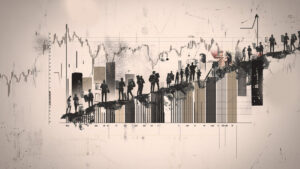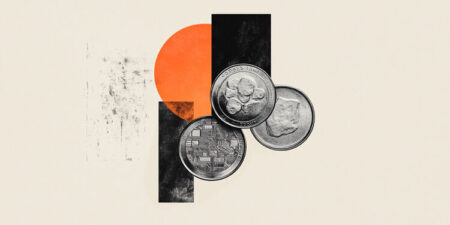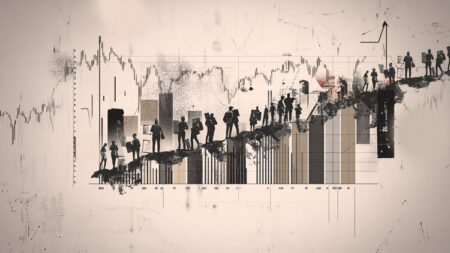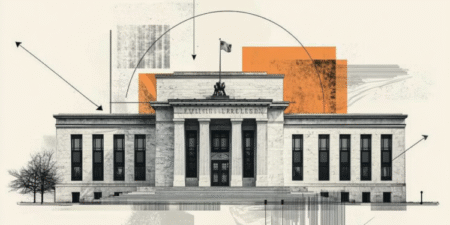- USD/CAD attracts some buyers as bearish Oil prices undermine the Loonie.
- A modest USD weakness keeps a lid on any meaningful gains for spot prices.
- The technical setup backs the case for a further near-term appreciating move.
The USD/CAD pair builds on the previous day’s bounce from the 1.3680-1.3675 area, or the weekly low, and gains some positive traction during the Asian session on Wednesday. Spot prices climb to a fresh daily high, around the 1.3730-1.3735 region in the last hour as bearish Crude Oil prices undermine the commodity-linked Loonie, through a softer US Dollar (USD) caps gain.
From a technical perspective, this week’s retracement slide from the 1.3800 neighborhood, or the monthly top, stalled on Tuesday near the 100-period Simple Moving Average (SMA) on the 4-hour chart. The subsequent move up, along with the recent breakthrough a short-term descending trend-line resistance, favors bullish traders, though mixed oscillators on hourly and daily charts warrant some caution.
Hence, any further strength is likely to confront a stiff barrier near the 1.3775 region, or the 200-period SMA on the 4-hour chart. The latter is followed by the monthly high, around the 1.3800 mark, which if conquered would set the stage for a further near-term appreciating move and lift the USD/CAD pair to the 1.3835-1.3840 zone en route to the 1.3860 region (May 29 peak) and the 1.3900 round- figure mark.
On the flip side, the 1.3700 mark could offer immediate support ahead of the 1.3680-1.3675 region (100-period SMA on the 4-hour chart). A convincing break below the latter could drag the USD/CAD pair to the descending trend-line hurdle breakpoint, now turned support, currently around the 1.3615 area. Some follow-through selling below the 1.3600 mark would shift the near-term bias in favor of bears.
USD/CAD 4-hour chart
Canadian Dollar FAQs
The key factors driving the Canadian Dollar (CAD) are the level of interest rates set by the Bank of Canada (BoC), the price of Oil, Canada’s largest export, the health of its economy, inflation and the Trade Balance, which is the difference between the value of Canada’s exports versus its imports. Other factors include market sentiment – whether investors are taking on more risky assets (risk-on) or seeking safe-havens (risk-off) – with risk-on being CAD-positive. As its largest trading partner, the health of the US economy is also a key factor influencing the Canadian Dollar.
The Bank of Canada (BoC) has a significant influence on the Canadian Dollar by setting the level of interest rates that banks can lend to one another. This influences the level of interest rates for everyone. The main goal of the BoC is to maintain inflation at 1-3% by adjusting interest rates up or down. Relatively higher interest rates tend to be positive for the CAD. The Bank of Canada can also use quantitative easing and tightening to influence credit conditions, with the former CAD-negative and the latter CAD-positive.
The price of Oil is a key factor impacting the value of the Canadian Dollar. Petroleum is Canada’s biggest export, so Oil price tends to have an immediate impact on the CAD value. Generally, if Oil price rises CAD also goes up, as aggregate demand for the currency increases. The opposite is the case if the price of Oil falls. Higher Oil prices also tend to result in a greater likelihood of a positive Trade Balance, which is also supportive of the CAD.
While inflation had always traditionally been thought of as a negative factor for a currency since it lowers the value of money, the opposite has actually been the case in modern times with the relaxation of cross-border capital controls. Higher inflation tends to lead central banks to put up interest rates which attracts more capital inflows from global investors seeking a lucrative place to keep their money. This increases demand for the local currency, which in Canada’s case is the Canadian Dollar.
Macroeconomic data releases gauge the health of the economy and can have an impact on the Canadian Dollar. Indicators such as GDP, Manufacturing and Services PMIs, employment, and consumer sentiment surveys can all influence the direction of the CAD. A strong economy is good for the Canadian Dollar. Not only does it attract more foreign investment but it may encourage the Bank of Canada to put up interest rates, leading to a stronger currency. If economic data is weak, however, the CAD is likely to fall.
Read the full article here
















